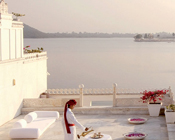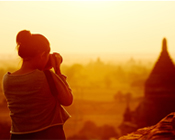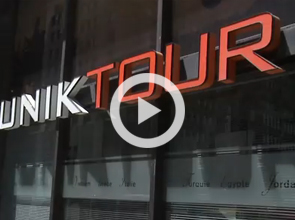Population & Culture
Civilization:
In the first century AD, three great civilizations take shape:
• The Teotihuacán, on the Anáhuac plateau; we still know nothing about the origins of these people, nor of the reason behind their disappearance
• The Zapotecs, in Monte Albán, in what is now the state of Oaxaca. They were the first to build ritual buildings. Between 700 and 750 BC, they began to use a type of pictographic writing and established their central state in what is now the Oaxaca valley.
• The Maya, whose territory stretched from southern Mexico to what is now Salvador. They built over a hundred city-states (Tikal, Palenque), each run by a theocracy. The architectural ruins left behind are clear signs that this culture had very advanced building techniques. The Maya produced many brilliant mathematicians and astronomers and profited considerably from their encounter with the Toltecs in the 9th century AD: this cultural syncretism gave birth to the cities of Uxmal and Chichén Itzá. Starting in the 12th century, this society became more and more decadent, a victim of rising inner conflict.
•And, of course, the Aztecs, who maintained their hegemony by brute force for over a century, collecting dues from their rivals and practicing religious sacrifices. At the beginning of the 16th century, 300000 people lived in Tenochtitlan, then the capital of the Aztec empire, now known as Mexico City. The Spanish conquered it on august 13th 1521, a painful birth to the mixed culture that would eventually become current day Mexico.
Mexico’s colonial heritage
When the Spanish landed in Mexico, they quickly realized that this was a land of incomparable beauty, rich with unlimited resources. Of course, they decided to stay. They built cities throughout the country, mixing their culture with the locals. The result is a traditional architectural style that is unique to Mexico. It is almost impossible to find a city without a mission or a cathedral that dates back a few hundred years. In many cases, the colonial architecture is still predominant. Mexico’s colonial treasures are boundless. There are more than fifty colonial cities, each showcasing different styles.
One example of such a colonial city is the second largest city in Mexico, Guadalajara, which is dotted with parks, monuments, town squares, and elegant colonial mansions. Many imposing buildings dating back to when the city was an important mining town still stand, such as the cathedral, Degollado theatre, and Cabanas Hospice. As for Guanajuato, the most colorful of all colonial cities, it proudly displays its magnificent theatres, churches, and public buildings, all dating back to the colonial era, as well as lovely paved alleys which, according to the legend of the Callejôn del Beso, are so narrow that lovers living on either side need only bend over to kiss. The city of ceramics, Puebla is bursting with picturesque charm, hidden convents, Spanish style patios, flower-covered arches, and stone fountains that would make many more famous monuments blush. If you pass by Cuernavaca, make sure you visit Cortès’ palace, now Cuauhnahuac museum, with its magnificent Diego Ribera frescoes and the historical Borda gardens. Then, of course, there’s Mexico City, the city of palaces, where the Spanish built the largest city of the new world on the ruins of an Aztec city. In the "Centro Historico", you’ll find the palace of Axayacatl, where Moctezuma was taken hostage by Cortès, now home to the immense Nacional Monte de Piedad. This area is also home to the oldest cathedral in the Americas and is a must for any itinerary. Also make sure you take a look at Chapultepéc castle, built on a hill overlooking the city, as well as the anthropology museum and the modern art museum, both of which are among the world’s finest. Of course, this city features countless other colonial wonders that history transformed into museums.
Cuisine
Rich and varied, Mexican cuisine is generally very spicy. It is the perfect blend of local fruit and legumes (corn, black beans, avocados, peppers, sweet potatoes, tomatoes, cocoa, vanilla), and meat from domesticated animals introduced by the Spanish (pork, beef, chicken). These ingredients are part of the daily eating habits of the people of Mexico. Included on UNESCO’S intangible cultural heritage list since 2010, Mexican gastronomy has many indigenous influences, though its origins date back to the Spanish conquests. Here are a few dishes, drinks, and products typical of Mexican cuisine:
• Peppers are an integral part of Mexican cuisine. Though there are many varieties, the most famous of these are el serrano, el xalapeño, and el poblano.
• Corn is still the main staple of Mexican cuisine. It was prepared in a variety of ways in pre-Columbian times, many of which are still around today: pancakes (tortillas), pasta stuffed with meat and then steamed (tamales), and porridge (atole). Most antojitos (appetizers) are made from tortillas.
• Black, white, red, and pinto frijoles (beans) are served at every meal, either in a soup, or as a side dish, often in a puree or fried.
Mexico is also an important coffee producer and exporter. Café con leche is a local specialty served with breakfast and with the 7 pm lunch. This country also has an impressive variety of alcohols and liquors of all types: tequila, mezcal (alcohol made from aloe), pulque (cactus leaf extract), beer, and licuados (smoothies with milk or water).

 1 (866) 722-0909
1 (866) 722-0909
 QUOTE REQUEST
QUOTE REQUEST 





































